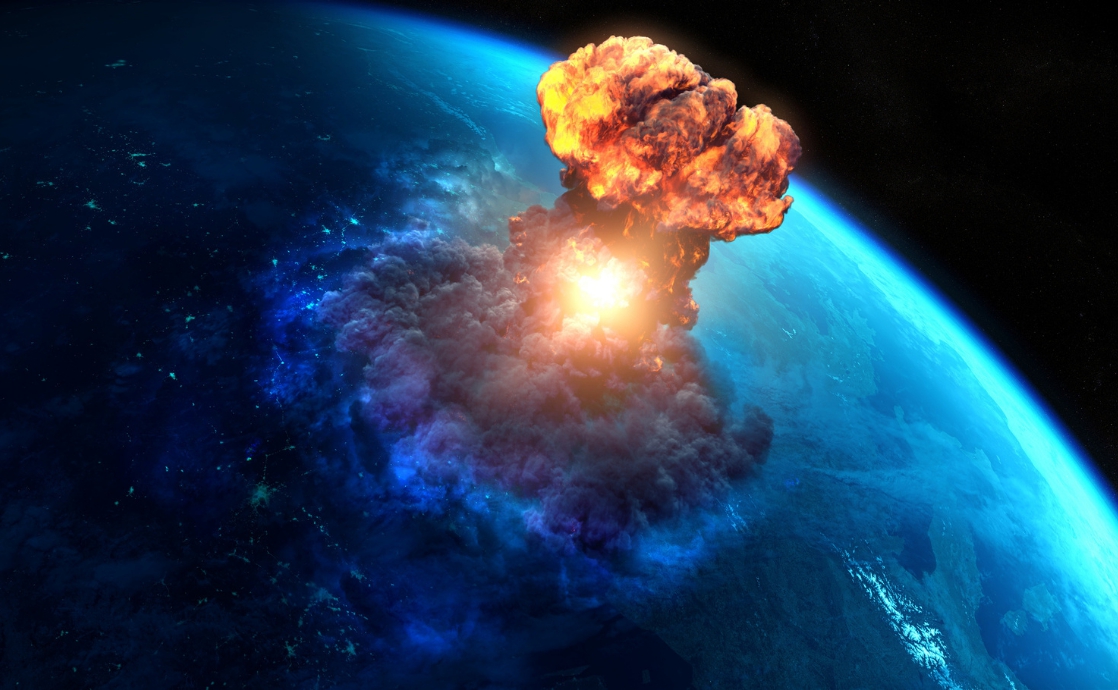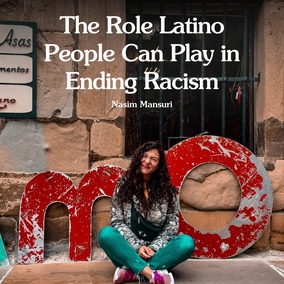The views expressed in our content reflect individual perspectives and do not represent the authoritative views of the Baha'i Faith.
The world’s nations have more weapons of war today than at any other time in human history. Unfortunately, history shows us that fearsome weapons, once built, rarely go unused.
This brings up the crucial contemporary subject of disarmament – which the UN General Assembly defines as the elimination of all weapons of mass destruction, coupled with the:
… balanced reduction of armed forces and conventional armaments, based on the principle of undiminished security of the parties with a view to promoting or enhancing stability at a lower military level, taking into account the need of all States to protect their security.
RELATED: Nuclear Disarmament and the Blueprint for Peace
More than a century before the United Nations defined disarmament this way, Baha’u’llah, the prophet and founder of the Baha’i Faith, writing in his book Epistle to the Son of the Wolf, urged the leaders of every nation to unite with other nations and then multilaterally disarm:
It is incumbent upon the Sovereigns of the world – may God assist them – unitedly to hold fast unto this Peace, which is the chief instrument for the protection of all mankind. It is Our hope that they will arise to achieve what will be conducive to the well-being of man. It is their duty to convene an all-inclusive assembly, which either they themselves or their ministers will attend, and to enforce whatever measures are required to establish unity and concord amongst men. They must put away the weapons of war, and turn to the instruments of universal reconstruction. Should one king rise up against another, all the other kings must arise to deter him. Arms and armaments will, then, be no more needed beyond that which is necessary to insure the internal security of their respective countries.
The Baha’i teachings repeatedly call on humanity’s leaders to disarm, to lay down their huge stores of weapons in mutual recognition that the era of global warfare has come to a close. Abdu’l-Baha, the son and successor of Baha’u’llah, wrote:
By a general agreement all the governments of the world must disarm simultaneously and at the same time. It will not do if one lays down the arms and the other refuses to do so. The nations of the world must concur with each other concerning this supremely important subject, thus they may abandon together the deadly weapons of human slaughter. As long as one nation increases her military and naval budget, another nation will be forced into this crazed competition through her natural and supposed interests.
All nations should agree to unify and end warfare as a global human community, the Baha’i teachings say, not only because of the carnage, death and destruction weapons of war cause – but also because of the enormous costs to societies that prepare for and wage war.
The world’s seemingly never-ending wars, including the ones we’re fighting now, and the ones we constantly plan and prepare to fight in the future, cost us all enormous sums in life and treasure. For example: government expenditures for war in the United States, and in many other countries, exceed every other area of spending.
Just look at what the U.S. alone does with its money: The country spends 6% of its annual budget to educate its children; 6% on the mechanism of government itself; 5.5% on housing and community expenses; 5% on health and health care; 4% on international affairs, including all foreign aid; 3% on energy and the environment; 2.5% on science and medical research; 2.5% on labor; 2% on transportation; 1% on food and agriculture – and 62.5% on the Department of Defense, wars in Iraq and Afghanistan, various weapons programs, veteran’s benefits, and other military expenditures, amounting to somewhere in the neighborhood of $1.25 trillion.
The staggering sums spent by the U.S. top the world’s list of military spending, but China, Russia, the European Union, Saudi Arabia, India, Japan and South Korea also expend enormous amounts on their militaries and on weapons systems. All together, the largest military powers in the world currently spend almost $2 trillion per year, according to the International Institute of Strategic Studies.
RELATED: No One Wins an Arms Race
Can you imagine what could be done with those enormous sums if we reduced our military spending to a more reasonable level?
The sheer volume of military spending in weaponized cultures staggers the imagination. To get a general sense of the magnitude of U.S. military spending, imagine feeding and housing and providing clothing and transportation and health care for 1.3 million men and women, just to start. Then consider the cost of constantly paying and training and re-training those men and women. Then, on top of that, try to total the tremendous costs of weapons systems, especially the advanced, high-tech, so-called “smart” weapons used in war today. One computer-guided missile costs a million dollars. One B-2 bomber costs $2 billion.
Keep in mind, too, that military spending doesn’t follow the standard laws of economics. The rapid pace of technological and scientific change means that so-called “defense” costs typically rise much faster and farther than comparable civilian costs. The global arms race to build bigger, deadlier and more fearful weapons systems continually drives higher and higher military budgets. Then, in the end, those weapons systems become obsolete when new and more expensive technologies inevitably emerge.
In modern society, our never-ending armaments competition between nations, and the constant readiness for all-out war those nations feel they must maintain, has become one of the greatest failures of contemporary civilization – an ongoing, self-fulfilling cycle that constitutes a heinous collective crime against humanity. It robs us of prosperity, steals food from the mouths of children, privileges war over human welfare, and expends enormous sums of money on death rather than life.
Ultimately, weapons produce nothing. When a factory makes a truck, for example, that truck goes on to do actual work, and continues throughout its useful lifespan to produce that work, contributing to the economy and the people who benefit from it. But when a factory makes a weapon, it gives us no lasting contribution at all. That weapon sits idle, a missile in a silo doing no useful work at all, giving nothing back to the society that made it, until it produces death. In a 1953 speech he gave to a group of newspaper editors, the last U.S. president who was once a military general, Dwight D. Eisenhower, said:
Every gun that is made, every warship launched, every rocket fired signifies, in the final sense, a theft from those who hunger and are not fed, those who are cold and are not clothed. This world in arms is not spending money alone. It is spending the sweat of its laborers, the genius of its scientists, the hopes of its children. The cost of one modern heavy bomber is this: a modern brick school in more than 30 cities. It is two electric power plants, each serving a town of 60,000 population. It is two fine, fully equipped hospitals. It is some fifty miles of concrete pavement. We pay for a single fighter plane with a half million bushels of wheat. We pay for a single destroyer with new homes that could have housed more than 8,000 people. This is, I repeat, the best way of life to be found on the road the world has been taking. This is not a way of life at all, in any true sense. Under the cloud of threatening war, it is humanity hanging from a cross of iron. … Is there no other way the world may live?
The Baha’i teachings concur, saying that each one of these weapons and weapons systems represents a spiritual failure of epic proportions. Abdu’l-Baha called them “the malignant fruits of material civilization:”
… among the teachings of Baha’u’llah is that although material civilization is one of the means for the progress of the world of mankind, yet until it becomes combined with Divine civilization, the desired result, which is the felicity of mankind, will not be attained. Consider! These battleships that reduce a city to ruins within the space of an hour are the result of material civilization; likewise the Krupp guns, the Mauser rifles, dynamite, submarines, torpedo boats, armed aircraft and bombers – all these weapons of war are the malignant fruits of material civilization. Had material civilization been combined with Divine civilization, these fiery weapons would never have been invented. Nay, rather, human energy would have been wholly devoted to useful inventions and would have been concentrated on praiseworthy discoveries.
So what will it take to transform our heavily-militarized and weaponized material civilization into the peaceful, productive and unified divine civilization the Baha’i teachings envision and prescribe? In the next essay in this series, we’ll look at the root causes of war for the answers to that crucial question.
















Comments
Sign in or create an account
Continue with Googleor